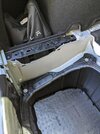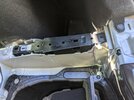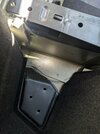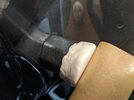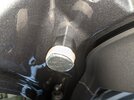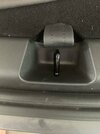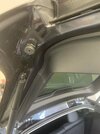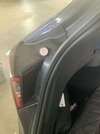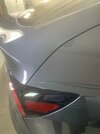I second what
@MY-Y says about the buffeting, at least for my car, making sure the catch is lowered (mine was already low but was able to adjust for a few more mm) and adjusting the 4 stops.
What was harder to address was the booming coming from the back. I ordered sheets of Noico from Amazon some time ago, and got to do this today:
Butyl sheets:
https://amzn.to/2NH3sCK
PE foam sound deadener:
https://amzn.to/3sC6qqY
roller:
https://amzn.to/3q43IZA
I had been experimenting by putting very heavy books in the rear subtrunk area and noticed how weighing down that area reduced unwanted noise. I suspect that repeated contact with the foam board and the bottom of the semi-rigid subtrunk liner was producing a pounding noise. Weighing down the subtrunk likely reduced movement and unwanted banging and the additional mass also reduced noise.
This is the first time I've applied sound deadener to a car, but after repeatedly driving our Model 3 and the Y, it was clear that the Y produced too much noise from the back, even though I've already changed tires and to MPP comfort coilovers. I also have used the butyl sheets for my home theater to reduce vibrations in some aluminum shelves and window roller shade facia covers that would become distracting on loud movies, and have noticed the big improvements from using these sheets. I'll probably use extra sheets for my washer/dryer.
This is just DIY, so it's an amateur application, though I did my best to roll each sheet with multiple passes as well as I could; it's going to be a workout and would cost about $130 in amazon supplies. It took me about 3 hours to do all of these today.
First applying the thinner, but heavy butyl sheets. Need to use a roller with this. Wear gloves, otherwise butyl will stick to your fingers. Used scissors to cut the sheets, but you can also use a knife.
To determine what needed application and how much, I knocked each surface and listened for resonating noise. The metal portions I left alone for the butyl sheets were either sufficiently solid (ex. the diecast structures) or needed to be left exposed for fasteners or potentially ventilation (would not want to introduce further ear pressure issues). I also applied under the smaller sub trunk area (butyl + PE foam), which already has 2 strips of sound material from the factory, but there was still plenty of resonating noise; pretty sure Tesla did not want to expend too much material, time and add weight to the car (and get less range) for comfort improvements.
Afterwards I topped it with the PE foam which can simply be stuck on like a sticker; no roller involved. I made sure to especially apply this thoroughly in the subtrunk area as I suspect that's where most of the booming sound is coming from. As I was applying this and continued pounding the panels, I noticed less and less resonating noise, and the metal pieces were sounding much more substantial and solid.
After I took these photos I made a few incisions in the PE foam corners in the subtrunk area to relieve some pressure and allow the subtrunk to be inserted more flush. I probably over-applied and had overlapping PE foam which caused the subtrunk liner to crease a bit after I was done; might revisit that and cut out the overlapping foam another day.
Applying just 2 sheets of butyl to the frame made a surprising sound difference on what is a very rigid metal frame; made this short video clip:
View attachment 640801
View attachment 640805 View attachment 640802 View attachment 640803 View attachment 640804
After a good drive and deliberately driving over rough patches (potholes, rutted portions of road, road reflectors), there's a significant improvement in reduced noise from the back. I'm very happy with the outcome. Can focus more on driving and driving fast than always minding the large increase in noise that usually comes with it.



